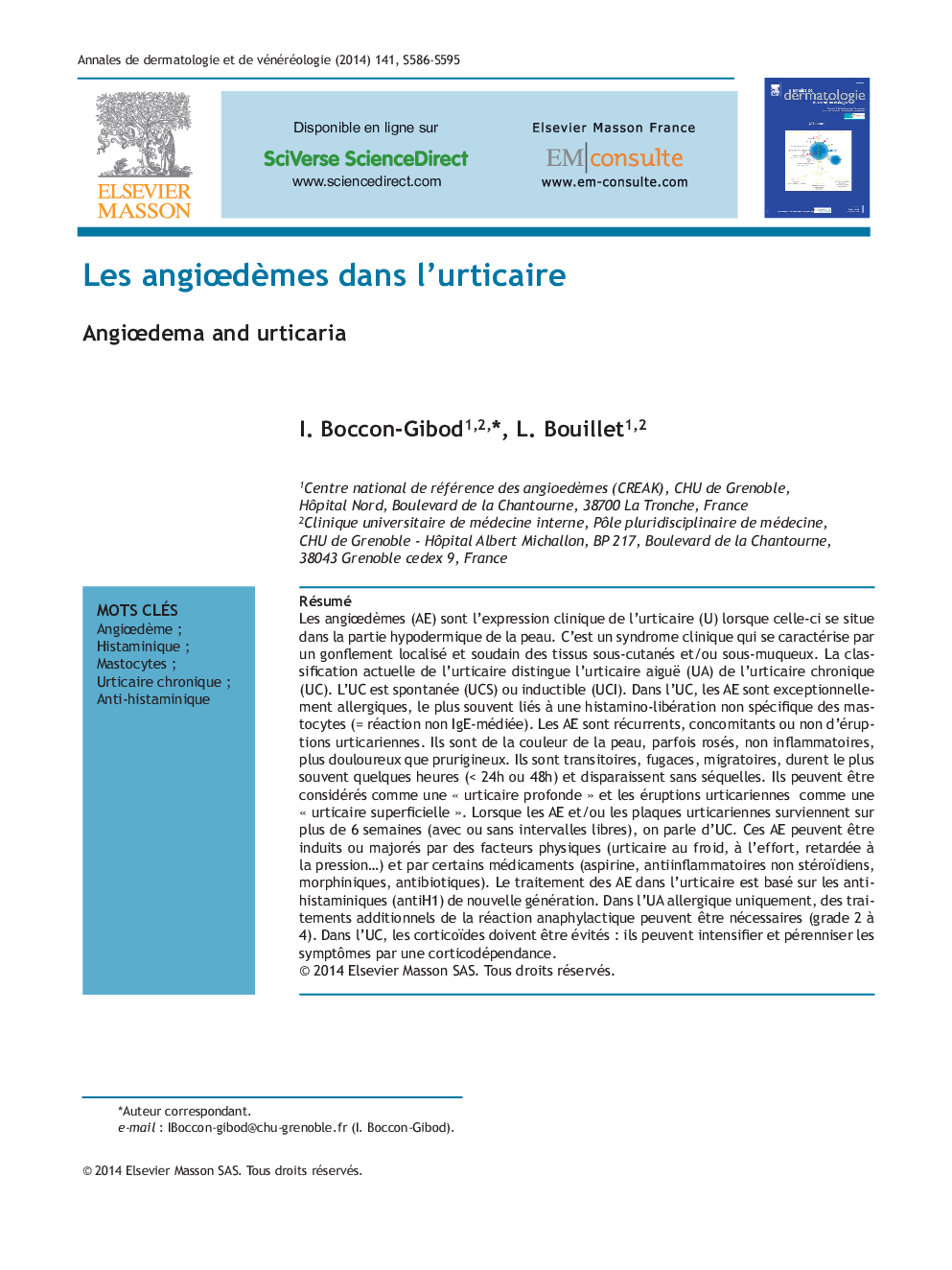| کد مقاله | کد نشریه | سال انتشار | مقاله انگلیسی | نسخه تمام متن |
|---|---|---|---|---|
| 3186568 | 1200906 | 2014 | 10 صفحه PDF | دانلود رایگان |
عنوان انگلیسی مقاله ISI
Les angiÅdèmes dans l'urticaire
دانلود مقاله + سفارش ترجمه
دانلود مقاله ISI انگلیسی
رایگان برای ایرانیان
کلمات کلیدی
موضوعات مرتبط
علوم پزشکی و سلامت
پزشکی و دندانپزشکی
امراض پوستی
پیش نمایش صفحه اول مقاله

چکیده انگلیسی
AngiÅdema (AE) is the clinical expression of urticaria (U) which occurs when urticaria is located within the subcutis. It is a syndrome characterized by a sudden and limited subcutaneous and/or submucous swelling. The updated classification of urticaria distinguishes acute and chronic urticaria. Chronic urticaria is spontaneous (CSU) or inducible (CIU). Angioedema in chronic urticaria is rarely allergic, but most of the time caused by a non-specific histamine release from activated mast-cell (non IgE mediated reaction). Angioedemas are recurrent, concomitant or not with wheals. They appear skin-coloured, sometimes slightly rosy, non-inflammatory, and more painful than itchy. They are transient, ephemeral, migrant, last most of the time a few hours (< 24 or 48h) and disappear without after-effects. They are considered “deep urticaria” and wheals “superficial urticaria”. When AE or wheals last more than 6 weeks (with or without free intermission), it is called chronic urticaria. Angioedema can be elicited or worsened by physical factors (cold urticaria, exercise, heat, solar, vibratory, aquagenic, delayed pressure urticariaâ¦) and /or drugs (as aspirin, nonsteroid anti-inflammatory drugs, morphine, antibioticsâ¦). The treatment of histaminergic angioedemas of chronic urticaria is based on modern second generation antihistamines (anti H1). In allergic acute urticaria only, additional treatment for anaphylaxis can be used if needed (grade 2 to 4). In chronic urticaria, steroids should be avoided : they can make symptoms worse and long-lasting because of corticosteroid dependence.
ناشر
Database: Elsevier - ScienceDirect (ساینس دایرکت)
Journal: Annales de Dermatologie et de Vénéréologie - Volume 141, Supplement 3, November 2014, Pages S586-S595
Journal: Annales de Dermatologie et de Vénéréologie - Volume 141, Supplement 3, November 2014, Pages S586-S595
نویسندگان
I. Boccon-Gibod, L. Bouillet,